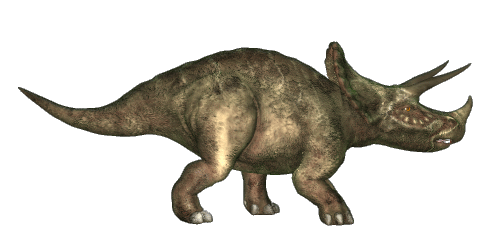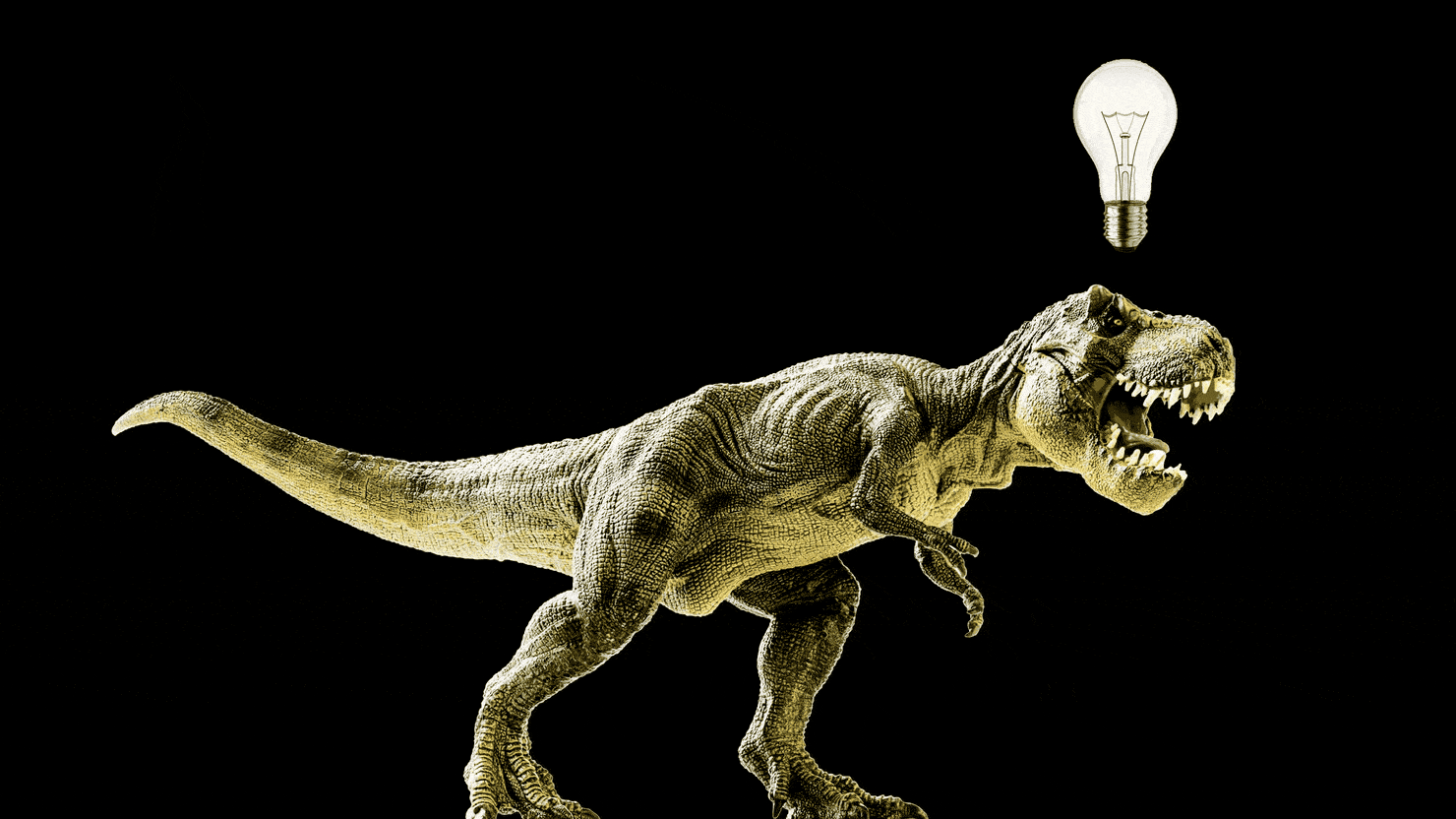
This is a Tricerotops!
Triceratops is a genus of herbivorous ceratopsid dinosaur that first appeared during the late Maastrichtian stage of the late Cretaceous period, about 68 million years ago (mya) in what is now North America. It is one of the last known non-avian dinosaur genera, and became extinct in the Cretaceous–Paleogene extinction event 66 million years ago. The name Triceratops, which literally means "three-horned face", is derived from the Ancient Greek words τρί- (tri-) meaning "three", κέρας (kéras) meaning "horn", and ὤψ (ōps) meaning "face".
Triceratops has been documented by numerous remains collected since the genus was first described in 1889 by Othniel Charles Marsh. Specimens representing life stages from hatchling to adult have been found. As the archetypal ceratopsid, Triceratops is one of the most popular dinosaurs, and has been featured in film, postal stamps, and many other types of media.Bearing a large bony frill and three horns on the skull, and its large four-legged body possessing similarities with the modern rhinoceros, Triceratops is one of the most recognizable of all dinosaurs and the best known ceratopsid. It was also one of the largest, up to nine metres long and twelve tonnes in weight. It shared the landscape with and was probably preyed upon by Tyrannosaurus, though it is less certain that the two did battle in the manner often depicted in museum displays and popular images.

This is a T-Rex

Some dinosaurs could fly, for example, the Pterodactyl
Triceratops was a huge herbivorous ceratopsid dinosaur from the late Cretaceous. Its name came from having three horns on its head. They were mainly found in North America. As adults, they grew up to 30 feet long by 9 feet tall (9.1 × 2.7 m), and probably weighed around 5,400 kg (12,000 lb). Triceratops was a low browser with a bony beak in front of its jaws. The jaws had close-set grinding teeth. Its defence had to stand up to attacks from taller theropods, hence the bony shield which covered its neck. Holes made by teeth have been found on the bony frill behind the horns, and on the sacrum (the part of the spine above the pelvis). Many fossils of Triceratops have been collected since the genus was first described in 1889. There is at least one complete individual skeleton. Paleontologist John Scannella observed: "It is hard to walk out into the Hell Creek Formation and not stumble upon a Triceratops weathering out of a hillside". Forty-seven complete or partial skulls were discovered in just that area during the decade 2000–2010. Specimens showing life stages from hatchling to adult have been found.
Pterodactylus (meaning "winged finger") is an extinct genus of pterosaurs, whose members are commonly known as pterodactyls . It is thought to contain only a single species, Pterodactylus antiquus, the first pterosaur species to be named and identified as a flying reptile.
The fossil remains of this species have been found primarily in the Solnhofen limestone of Bavaria, Germany, dated to the late Jurassic Period (early Tithonian), about 150.8–148.5 million years ago, though more fragmentary remains have been tentatively identified from elsewhere in Europe and in Africa.
It was a carnivore and probably preyed upon fish and other small animals. Like all pterosaurs, Pterodactylus had wings formed by a skin and muscle membrane stretching from its elongated fourth finger to its hind limbs. It was supported internally by collagen fibres and externally by keratinous ridges.Pterodactylus is known from over 30 fossil specimens, and though most of those are juveniles, many preserve complete skeletons. Pterodactylus antiquus was a relatively small pterosaur, with an estimated adult wingspan of about 1.04 meters (3 feet 5 inches) (the only known adult specimen is represented by an isolated skull). Other "species" were once thought to be smaller. However, these smaller specimens have been shown to represent juveniles of Pterodactylus, as well as its contemporary relatives including Ctenochasma, Germanodactylus, Aurorazhdarcho, Gnathosaurus (and hypothetically Aerodactylus if this genus is truly valid).

